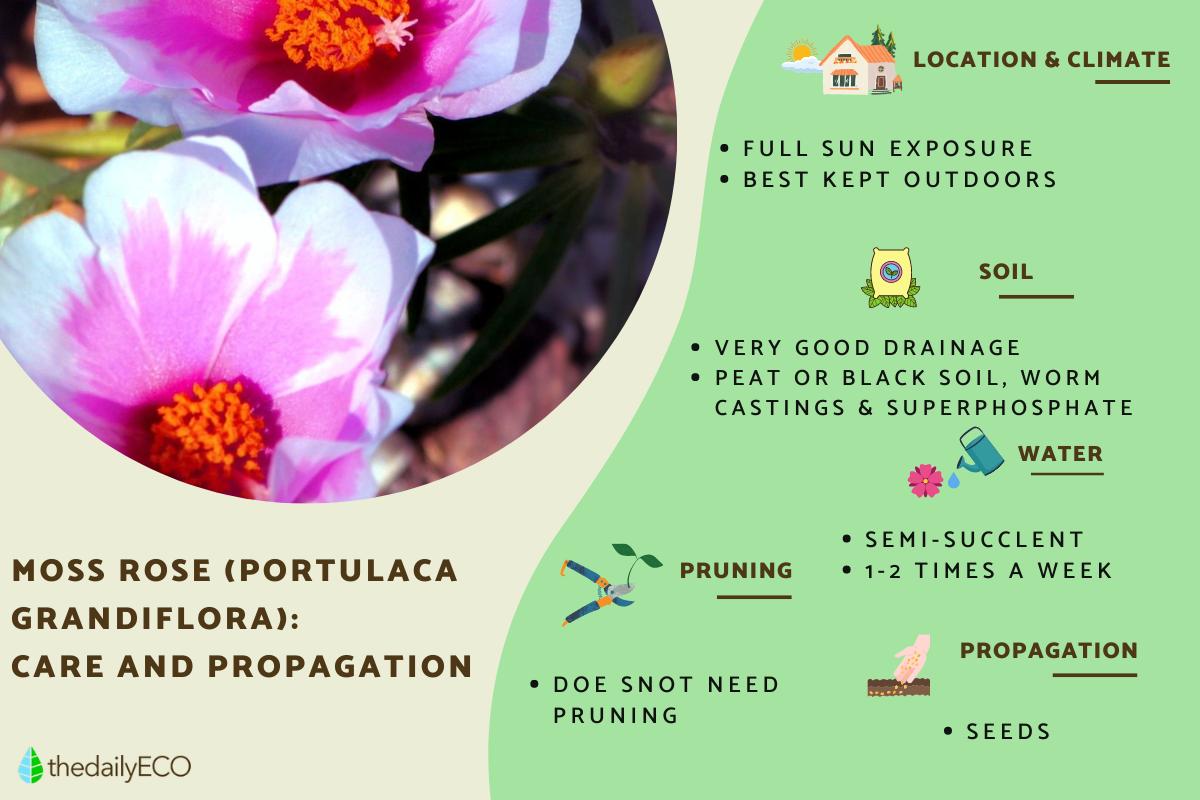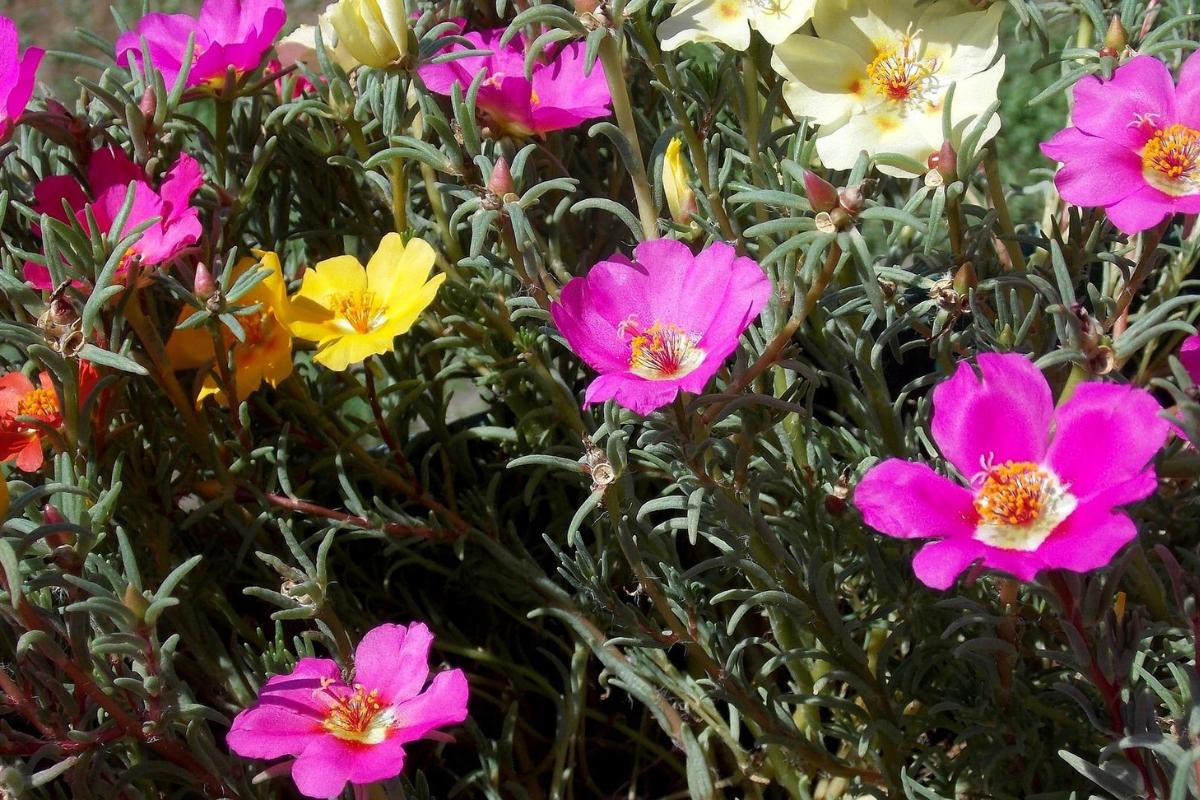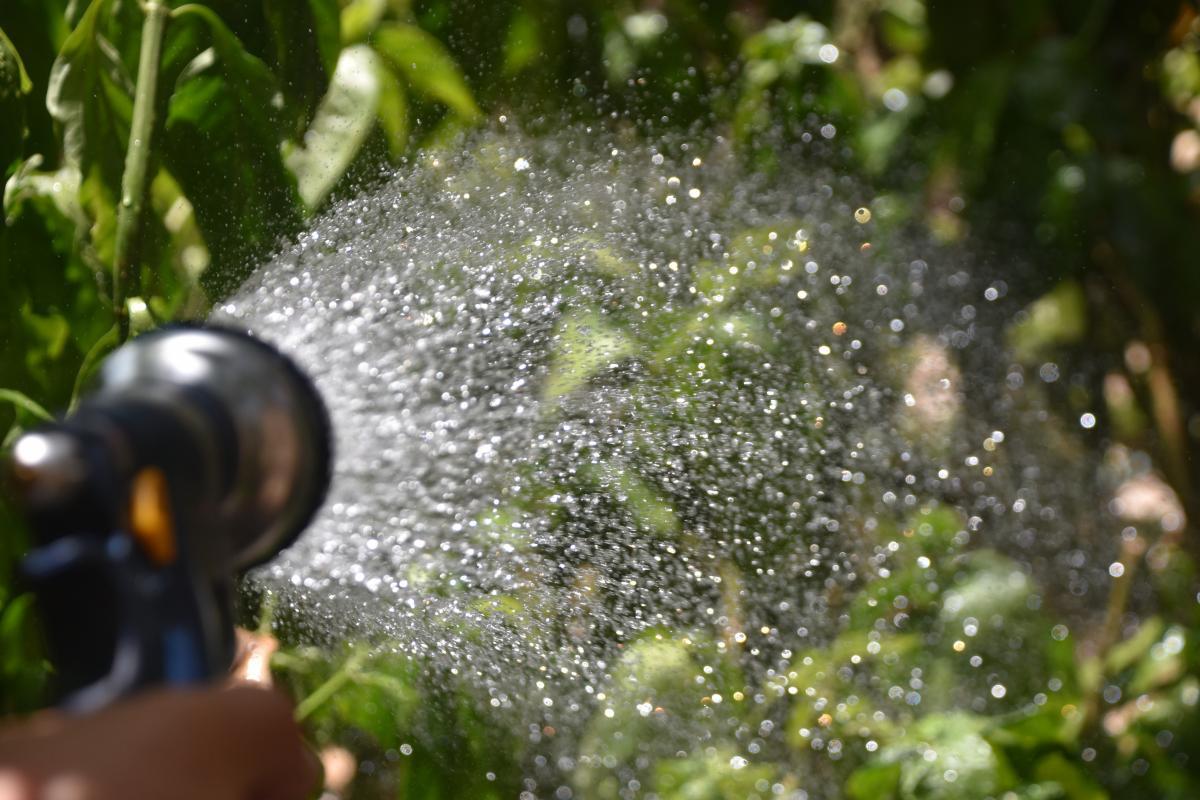Portulaca Plant Care and Propagation


Caring for a portulaca plant requires full sun exposure, moderate watering and sandy soil with good drainage. Reproduction is done by seeds during the spring.
Invariably known as moss rose, Mexican rose, sun rose, rock rose or even eleven o´clock, Portulaca grandiflora is native to Brazil and Argentina, but its cultivation has already spread throughout the world. It is especially popular as an ornamental plant, not only for its beauty, but also for its relative ease for growth and cultivation. If you would like to have one of these gorgeous plants at home, thedailyECO shares all you need to know about portulaca plant care and propagation.
Characteristics of the portulaca plant
Before we look at the care of the portulaca plant, we can take a look at some of the characteristics of moss rose to better understand their care needs:
- It is a herbaceous plant with fleshy and succulent leaves of bright green color with an elongated and cylindrical shape.
- The stems can grow straight up or elongate above the ground. They can grow up to 14"/35 cm in length. The nodes from which the leaves emerge have white hairs. It grows expansively across the ground, giving it the common name of moss rose.
- The flowers are solitary and around 1-1.5"/3-4 cm in diameter. They present in colors of pink, white, red, orange, cream or yellow. It blooms in the summer from June to October. They appear in the early hours of the morning and disappear later in the day, which is why this plant is also known as eleven o'clock. Some varieties are double-flowered, with more petals than normal. There are even bicolor variegated cultivars or with special shades. The delicate petals give the silk flower plant its name.
- They are annual plants, germinating in spring and dying in autumn. They are also semi-succulent.
- Portulaca grandiflora is in the genus Portulaca, some of which are edible, but not all varieties are. In fact, some of them may even be mildly toxic. In most cases, the reason they are inedible is due to their bitter taste. If you do want to know about plants that are edible, take a look at our article on types of edible succulent plants.
If you would like to have this beautiful plant at home, you can use the link below to buy some moss rose seeds.

Light and location
Moss rose needs full sun exposure to produce the showy flowers. When evening comes, the flowers close due to lack of light. Because it stores water inside the leaves, it can survive well in very dry areas.
It is a plant for outdoor cultivation. Due to its low growth, it is used for ground cover or hanging, for rocky or gravel gardens, to fill spaces in flower beds, for pollinator-attracting gardens or as patches of color for garden design. Learn more about types of pollinator animals which rely on plants like the portulaca.
It can be placed directly on the ground, or in a pot to control its growth.

Portulaca plant soil and fertilizer
In their natural environment they grow very well in disturbed, poor and nutrient-depleted soils. At home, we can better control their potting and planting conditions for better results.
The soil must be sandy, but with very good drainage. They are prone to rot due to their semi-succulent leaves, so be sure to prepare a good soil mix for both potted and direct soil Portulaca grandiflora. In the first case, you also have to make sure that the container for the moss rose has holes for excess water to drain out.
Prepare a mixture of equal parts of peat or black soil, worm castings and sand. Mix and integrate well. At the bottom of the hole where the plant will go, a few grains of triple superphosphate are placed. Although moss rose tolerates soil with few nutrients, a little extra will help it to have a very abundant flowering.
Learn how to make worm castings at home with our related article.
Irrigation of portulaca plants
It tolerates drought well because of its succulent leaves that retain water. This means you don't need to water it a lot. If it is watered regularly, better results and greater productivity will be obtained. The ideal frequency of watering is 1 to 2 times a week, increasing in summer if the heat evaporates the water too much.

Portulaca plant pruning
Pruning the stems is not necessary because they do not grow too much. If they stand out from the gardening design or structure you have in mind, you can do it no problem.
If you don't need the plant to produce seeds, it is recommended to cut off the withering flower heads so that the new flowers can grow abundantly. If you'd like to get seeds from your plant, don't cut them. In the next section below, we will see how to use such seeds for moss rose propagation.
Portulaca plant propagation
Being a type of annual plant, it is best to know how to propagate it in order to enjoy it every year. Propagation is done by seed in spring. They measure only one millimeter, so the best when they are bought they are mixed directly with the substrate.
If you want to place them first in a seedbed, you must bear in mind that they are transplanted when the seedlings have 4 leaves. The roots are fragile when transplanted, so transplanting should be avoided during frosts and care must also be taken outside.
They should only be transplanted in the afternoon to avoid extreme temperatures. It should be watered before and after placing the transplanted because this reduces the risk of dehydration and improves the fixation to the earth. They should always be placed 15 centimeters apart to give them room to grow.
Seeds of Portulaca grandiflora are available in garden stores, such as the link indicated in the first section of this guide. They are also easily obtained when our plant has already flowered. The flowers mature in autumn in a capsule that opens on its own on the ground, dropping the seeds and spreading easily on its own. Keeping the heads so that they produce flowers in the same spot will help increase the density of the plant.
Now that you know more about the care of Portulaca grandiflora and its reproduction, you may want to learn about a plant that blooms only at night, rather than the day. This is our night blooming jasmine care guide.
If you want to read similar articles to Portulaca Plant Care and Propagation, we recommend you visit our Plant care and cultivation category.
- Silva, R. (1985). Basic gardening no. 1: plants and flowers. Chile: Andres Bello.
- Mohlenbrock, R. H. (2001). Flowering Plants: Pokeweeds, Four-o'clocks, Carpetweeds, Cacti, Purslanes, Goosefoots, Pigweeds, and Pinks. Ukraine: Southern Illinois University Press.
- Royal Horticultural Society. (n.d.). Portulaca grandiflora Rose moss. Retrieved from: https://www.rhs.org.uk/plants/60169/portulaca-grandiflora/details








